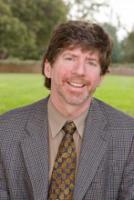
Greg Deierlein is the John A. Blume Professor of Engineering in the Department of Civil & Environmental Engineering at Stanford University where he directs the Blume Earthquake Engineering Center. He holds a doctorate from the University of Texas at Austin, a master of science from the University of California at Berkeley, and a bachelor of science from Cornell University. Greg previously served as the deputy director for the Pacific Earthquake Engineering Research (PEER) Center where he led the research planning to develop performance-based approaches and technologies in earthquake engineering. Deierlein specializes in the design and behavior of steel, concrete and composite structures, nonlinear structural analysis, computational fracture and damage mechanics, and performance-based earthquake engineering. He is a registered professional engineer and maintains professional activities as a structural engineering consultant, design peer reviewer, and participant in national technical and building code standards committees. In 2013, he was elected to the US National Academy of Engineering for his contributions to applying nonlinear analysis in structural design.
While light-frame residential house construction generally performs well with respect to life safety, experience from past earthquakes indicates that widespread damage to houses can lead to large financial losses. The damage and losses are not entirely unexpected, owing to prevailing design philosophies that advocate reduced earthquake design forces using ductile seismic systems. In contrast to current approaches, a new seismic design methodology is proposed to reduce deformations and damage through an enhanced strength/stiffness limited ductility light-frame shear wall system. The increased strength and stiffness is achieved by fully engaging all available interior and exterior walls to create a unibody system. Full-scale tests and analyses of component and system assemblies are presented to demonstrate ways to economically achieve enhanced wall strength and stiffness through the use of construction adhesive to attach gypsum wallboard sheathing and improved screw connectors to attach exterior stucco cladding. For improved performance in high seismic regions, the enhanced strength superstructure can be combined with a low-cost seismic isolation system of high-density polyethylene sliding isolators on flat or dish-shaped galvanized steel plates. The isolators and required displacements are economically accommodated in a wood-framed first-floor isolation platform. Supported by validated analysis models, design methods for the proposed enhanced-unibody light-frame system and seismic isolators are demonstrated in a shake-table test of a full-scale two-story wood frame house, conducted at the NEES facility at the University of California at San Diego.
Lindsay Walton
lwalton@ucsd.edu
(858)822-3273
